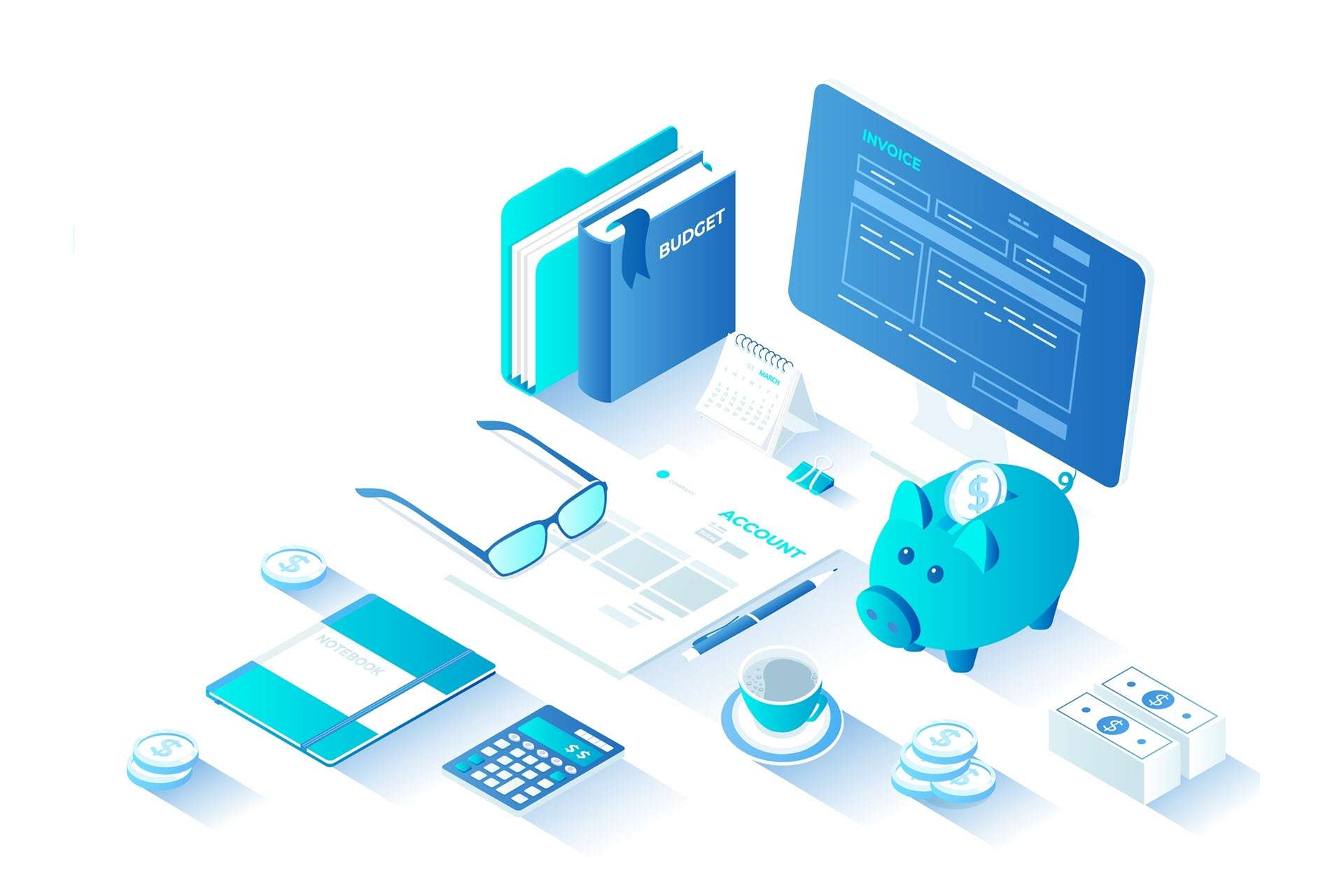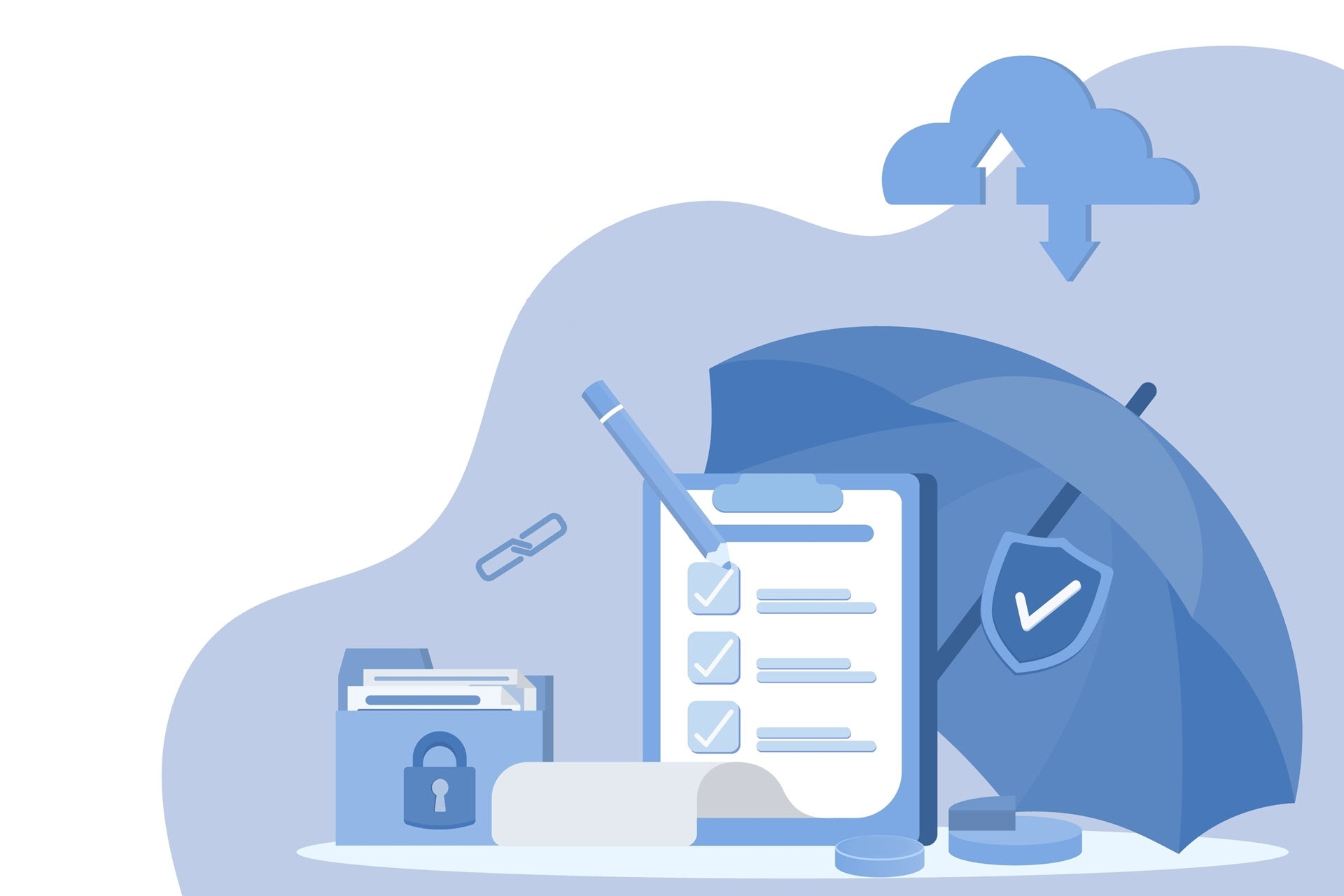Unexpected events like fires, floods, or cyberattacks can paralyze your organization and wipe away hard-earned gains in the blink of an eye. While these scenarios may seem like they only happen to others, disasters are an ever-present threat to all businesses.
Without a strategy to prevent and mitigate adverse events, your organization is vulnerable. A business continuity and disaster recovery (BCDR) plan creates a roadmap for restoring operations which could make the difference between a temporary setback and a catastrophic collapse.
If you still operate without a plan, now is the time to act. This guide will equip you with the knowledge to craft an effective BCDR plan to help your business survive and thrive.
What Is a BCDR Plan?
A BCDR plan, or business continuity and disaster recovery plan, is a comprehensive strategy that outlines how an organization responds to and recovers from threats and disruptions.
It is a set of policies and procedures that proactively ensure the continuity of critical business operations while minimizing the impact of disasters, technology failures, and cyberattacks.
What Are BCDR Components?
A BCDR framework blends two distinct strategies, Business Continuity (BC) and Disaster Recovery (DR), into a unified set of processes and procedures that an organization puts in place to ensure it remains operational during and after a disaster.
Business Continuity
Business continuity is an organization's ability to continue delivering its products or services despite a major disruption. The primary goal of BC is to minimize downtime.
Interruptions to business continuity include:
- Natural disasters, such as earthquakes and hurricanes.
- Physical damage, like fires, floods, and vandalism at offices or data centers.
- Infrastructure disruptions, including power outages, network failures, and telecommunication breakdowns.
- Health crises, like disease outbreaks and pandemics.
- Malicious acts, such as theft, fraud, sabotage, and insider threats.
- Cyberattacks, including ransomware, DDoS attacks, phishing, and data breaches.
- Data center failures, manifesting as hardware malfunctions, software glitches, and data loss.
Preparing a detailed incident response plan for every conceivable scenario is not always practical or cost-effective. Instead, organizations should focus on the most likely and impactful disruptions, considering their geographic location, industry risks, and past incident history.
Our article on business continuity best practices will help you create a comprehensive BC strategy that leaves no stone unturned.
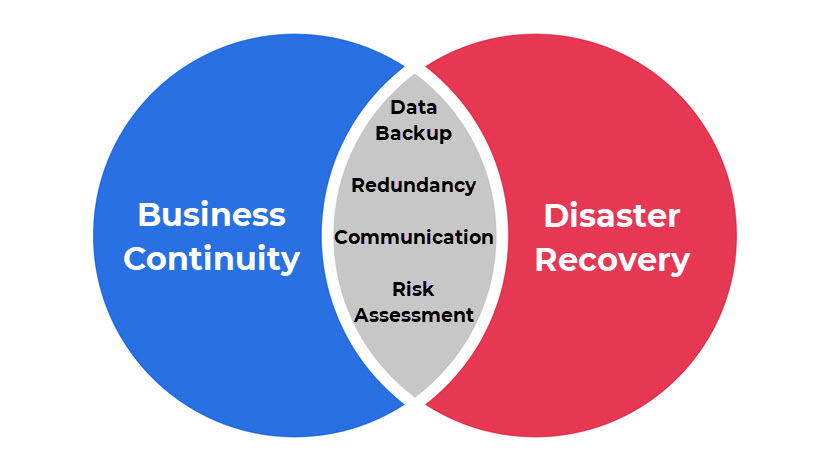
Disaster Recovery
Disaster recovery (DR) involves restoring functionality to IT infrastructure after a disruption.
The three main DR service models are cold, warm, and hot, which refers to how services are delivered and consumed. The right choice depends on your recovery time objective (RTO) and recovery point objective (RPO), as well as your budget and risk tolerance.
For an outline of the features of the three modalities of Disaster Recovery, consult the table below:
| Feature | Cold DR | Warm DR | Hot DR |
| Description | A bare-bones IT environment with basic infrastructure and network connectivity. No data or software is pre-installed. | A partially configured IT environment with some data and software in place, but data is not replicated or mirrored. | A fully functional and operational IT environment that is a replica of the primary production site. |
| RTO | Longest RTO; it requires software installation, data restoration, and system configuration. | Moderate RTO; it requires transporting and loading data onto standby servers. | Shortest RTO; the site is ready for immediate operation. |
| RPO | Highest RPO; data loss can occur due to infrequent backups. | Moderate RPO; data is typically backed up regularly. | Lowest RPO; data is continually mirrored or replicated. |
| Cost | The least expensive option; it only requires maintaining the basic infrastructure. | More expensive than a cold site but less than a hot site. | Most expensive option; it involves maintaining a fully functional replica of the main site. |
| Suitability | Suitable for organizations with low-criticality data and a high tolerance for downtime. | Suitable for organizations with moderate-criticality data and a need for faster recovery times. | Suitable for organizations with high-criticality data and zero-tolerance for downtime. |
There are three DR deployment types, each with advantages and disadvantages. Deployment type refers to the physical location of the DR infrastructure.
- Traditional disaster recovery. This type of DR involves setting up a secondary data center or colocation facility that houses IT infrastructure that comes alive if a disaster occurs at the primary data center. Traditional DR is a good option for organizations that have the resources to maintain a second data center.
- Cloud disaster recovery. Cloud DR leverages cloud computing to recover IT infrastructure in a disaster. Its main feature is that it avoids the cost and complexity of maintaining a secondary data center.
- Disaster recovery as a service (DRaaS). DRaaS is a service-based DR solution provided by a third-party vendor. With DRaaS, the vendor sets up and maintains the recovery infrastructure as well as the failover and failback. DRaaS is a good option for organizations that want to outsource their DR needs.
Location plays a vital role in disaster recovery. Geographically dispersed DR sites protect from regional disasters that could impact both the primary and secondary locations. phoenixNAP's global network of data centers ensures your recovery site is far removed from potential disasters, minimizing the risk of cascading outages. We also offer a range of solutions to suit your needs and budget, and our services scale effortlessly to support your growing business. We have a track record of reliability and uptime, with a team of experts who will keep your data safe, secure, and accessible 24/7.
Protect your digital lifeline with our Disaster Recovery as a Service.
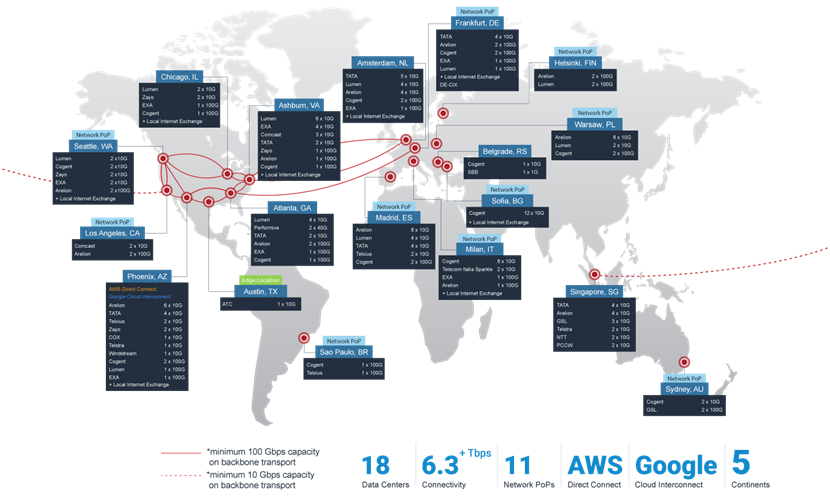
Who Needs a BCDR Plan?
Businesses in all industries benefit from a BCDR plan. However, some need it more than others.
High-risk industries that demand failproof BCDR plans include:
- Finance. Financial institutions are prime targets for cyberattacks because they store customer account numbers, passwords, and credit card details.
- Healthcare. Healthcare providers are particularly vulnerable to events that jeopardize patient safety and disrupt critical care services. Furthermore, The Health Insurance Portability and Accountability Act (HIPAA) mandates that healthcare organizations implement a disaster recovery plan to protect patient health information.
- Energy. State-sponsored hackers are increasingly targeting energy companies. They are an enticing target because disruption to the energy grid devastates the economy and threatens public safety.
- Manufacturing. Manufacturers rely on a complex and lengthy supply chain, which is especially susceptible to disruptions due to various incidents. Additionally, production downtime in manufacturing incurs massive financial losses.
Why Is a BCDR Plan Important?
Downtime is a ticking time bomb, costing $9,000 per minute. This figure goes beyond immediate financial losses, encompassing lost productivity, missed opportunities, and reputational damage.
Worryingly, over 60% of service outages in 2022 resulted in losses exceeding $100,000, a significant increase from 39% in 2019. The proportion of outages causing over $1 million in damages has also risen from 11% to 15% during the same period.
Even in cases where you can’t avoid downtime, operational resilience is crucial. 60% of small businesses face closure within six months of a cyberattack, and a quarter never reopens after a disaster. Despite these risks, only 54% of organizations have a solid disaster recovery plan.
Read our article on disaster recovery statistics to gain a deeper understanding of the impact of downtime and the importance of a robust BCDR plan.
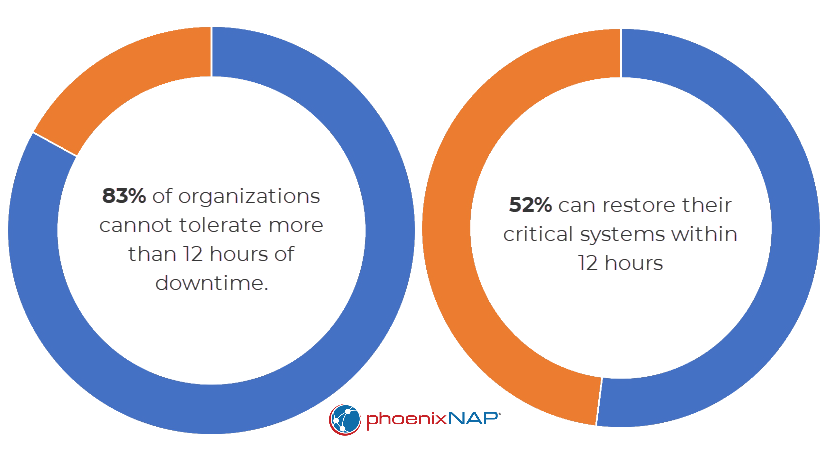
What Should You Include in a BCDR Plan?
Here is an outline of the essential elements that a comprehensive BCDR plan should include:
- Business Impact Analysis (BIA). A BIA identifies your critical business functions and the impact a disruption would have on your organization. This information enables you to prioritize your BCDR efforts.
- Risk Assessment. A risk assessment identifies the potential threats that could disrupt your business. Once you know your risks, you can develop mitigation strategies and ensure that the BCDR plan is comprehensive.
- Backup Strategy. A robust backup strategy is the foundation of any BCDR plan. It defines how, when, and where critical data is backed up, ensuring its preservation and availability during a disaster.
- RTO and RPO. Recovery Time Objective (RTO) and Recovery Point Objective (RPO) are metrics that quantify your tolerance for downtime and data loss. RTO is the maximum acceptable time to restore critical business functions, while RPO is the maximum amount of data loss you can tolerate.
- Business Continuity Plan (BCP). A BCP defines the steps to maintain critical business functions during and after a disruption.
- Disaster Recovery Plan (DRP). A DRP outlines the steps an organization takes to restore IT systems and data after a disaster.
- Communication Plan. A robust communication plan ensures that all stakeholders are informed and engaged during a disruption. This plan should clearly define the communication hierarchy, the information to be shared with each group, and the appropriate timing for disseminating updates.
- Roles and Responsibilities. The BCDR plan should explicitly outline the tasks, duties, and decision-making authority of each individual or team involved. Clearly defined roles minimize confusion, prevent the duplication of efforts, and ensure that critical tasks are not overlooked.
It is vital to store your BCDR plan on a system that is not susceptible to data loss. Losing this document during a disaster will waste valuable time and hinder your ability to recover effectively.

How to Create a BCDR Plan?
Here is a practical step-by-step guide to building and implementing an effective BCDR plan:
1. Determine the Scope and Objectives
- Define the purpose of the BCDR plan, including the types of disasters it encompasses and how and when you will activate it.
- Identify the critical business functions and processes that you will protect and prioritize.
- Establish clear RTOs and RPOs for each function.
2. Conduct a Risk Assessment and BIA
- Identify potential threats and hazards that could disrupt business operations.
- Assess the likelihood and impact of each risk on critical business functions.
- Conduct a BIA to determine the financial and operational consequences of downtime for each critical function.
3. Select a BCDR Plan Template
- Choose a template that aligns with the scope and objectives you defined in Step 1.
- Consider your organization's size and complexity, IT infrastructure, and industry regulations.
- Ensure the template includes sections for risk assessment, recovery strategies, communication plans, and testing procedures.
Get started with phoenixNAP's free business continuity plan template.
4. Customize the Plan
- Populate the template with specific details relevant to your organization's unique needs.
- Identify key personnel and assign roles and responsibilities for each phase of the recovery process.
- Develop detailed procedures for backing up and restoring critical data and systems.
- Establish communication protocols for notifying stakeholders and coordinating recovery efforts.
5. Train Your Employees
- Develop training materials that cover all aspects of the BCDR plan, including disaster scenarios, roles and responsibilities, and emergency procedures.
- Conduct regular training sessions for all employees, ensuring they understand their specific roles and how to contribute to the recovery effort.
- Provide hands-on training through simulations and exercises to reinforce understanding and enhance preparedness.
- Periodically organize refresher training sessions to maintain employee awareness and proficiency.
BCDR Testing
Testing your BCDR shouldn't be an afterthought. It's integral to BCDR planning and the bridge between theory and practice. It exposes your plan's strengths and weaknesses, ensures readiness and familiarity among personnel, and validates the plan's alignment with your RPO and RTO.
Furthermore, it is a diagnostic tool, pinpointing areas that require enhancement and refinement and informing future versions of the plan.
There are three methods of BCDR testing:
- Walkthroughs and Tabletop Exercises. Hypothetical scenarios are discussed in a group setting to identify potential issues and refine response strategies.
- Simulation Exercises. Real-world scenarios are simulated in a more realistic environment to test the plan's effectiveness under pressure.
- Full-Scale Drills. Large-scale simulations that replicate the impact of a significant disaster involving all relevant departments and stakeholders.
To ensure your BCDR plan remains effective, test it at least once a year.
BCDR Plan Cost
Implementing a BCDR plan can range from a few thousand dollars for a small business to hundreds of thousands for a large enterprise.
You don't want to overspend on business continuity and disaster recovery. By estimating the potential costs of different types of disasters, you can establish a benchmark for making an informed decision on BCDR investment. However, in general, the costs of implementing a BCDR plan are small compared to the potential costs of a disaster.

Let us help you assess your data protection needs and develop a customized plan to protect your information. Contact us today for a complimentary consultation.
Bottom Line: Prepare for the Unexpected
Operational resilience is not a luxury – it is a necessity for businesses of all sizes and industries. Downtime is costly and results in lost employee productivity, missed sales opportunities, and reputational damage. The costs of restoring operations after a disaster are even more significant.
Investing in a comprehensive BCDR plan protects your assets and ensures continued success despite adversity.

